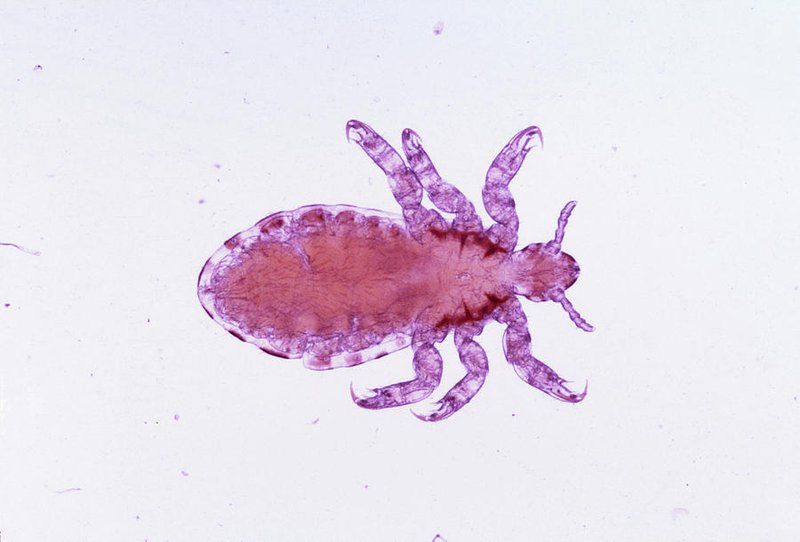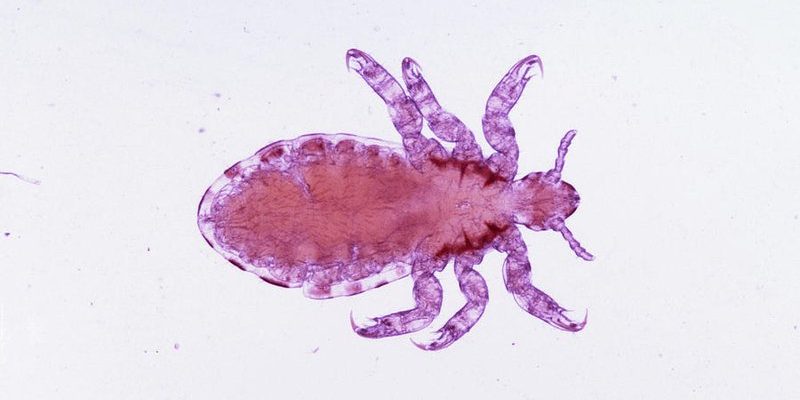
You might have heard the word “louse” thrown around when discussing pesky little creatures that annoy pets or people. But what exactly is a louse? In simple terms, a louse is a tiny parasitic insect that belongs to the order Phthiraptera. These uninvited guests often live on the skin or feathers of animals and humans. They feed on blood, skin, or other bodily fluids, making them quite unhygienic companions.
Picture a tiny vampire, just a few millimeters long, comfortably nestled in your hair or pet’s fur, just waiting to sip on some blood. These insects have specialized mouthparts that allow them to cling and feed effectively, making it hard to get rid of them once they infest a host. The most common species you might know include head lice, body lice, and pubic lice, each with its own preference for where it likes to hang out.
Types of Lice
There are three primary types of lice that we commonly talk about: head lice, body lice, and pubic lice. Each type has different preferences for hosts and habitats, making them uniquely interesting. Let’s break this down a bit, shall we?
Head Lice
Head lice, as the name suggests, prefer to live on the human scalp. They’re tiny, about the size of a pinhead, and can be quite a nuisance. These little critters love warm, cozy environments like hair, where they can easily find food in the form of blood. They often spread through close contact, especially in crowded places like schools. You might not even realize you have them until you start to feel itchy or notice small white eggs, known as nits, stuck to your hair shafts.
Interestingly, head lice don’t jump or fly; they crawl, so sharing hats or brushes can help them spread. The good news? They don’t carry diseases, but that doesn’t make them any less annoying!
Body Lice
Body lice are a different story. Unlike head lice that stick primarily to hair, body lice prefer to dwell in clothing, only moving to the skin to feed. They are usually found in people who do not have regular access to hygiene facilities. Body lice can transmit diseases like typhus and trench fever, which makes them a bigger concern in terms of health risks. If you notice itching or a rash, it’s crucial to wash clothes thoroughly and maintain cleanliness.
To prevent body lice, regular washing of clothing and bedding is key. Keeping your living environment clean can go a long way in avoiding these annoying pests.
Pubic Lice
Pubic lice, often called “crabs,” are specifically adapted to live in the coarse hair found in the pubic region. However, they can also appear in armpits, chest hair, and facial hair. Their shape resembles that of crabs, hence the nickname. These lice are typically spread through sexual contact, but they can also be passed through sharing towels or bed linens. If you notice intense itching or irritation in sensitive areas, it’s a good idea to seek treatment.
Interestingly, pubic lice do not transmit diseases, but they can cause discomfort and anxiety. Fortunately, treatments such as lotions and shampoos can help eliminate them effectively.
Facts About Lice
| Type | Size | Habitat | Diet | Lifespan |
| Head Lice | 1-2 mm | Scalp | Blood | 30 days |
| Body Lice | 1-2 mm | Clothes | Blood | 30 days |
| Pubic Lice | 1-2 mm | Pubic area | Blood | 30 days |
How Do Lice Spread?
You might be wondering how these pesky little creatures multiply and spread. Lice reproduce quickly; a female can lay up to 10 eggs daily! These eggs hatch into nymphs in about a week, and before you know it, you could have a full-on infestation. The common way for lice to spread is through close contact, meaning that hugs, sharing personal items, or being in close proximity to someone who has lice are all ways they can jump from one host to another.
In crowded settings, like schools or camps, lice can spread rapidly. That’s why checking for lice is often a routine procedure in many schools. But don’t worry; regular checks and good hygiene practices can help catch lice before they become a bigger problem.
How to Identify a Louse Infestation
Identifying a louse infestation can sometimes feel like searching for a needle in a haystack. One of the first signs is itching, which is caused by an allergic reaction to the louse bites. If you’re itching persistently, it’s a good idea to take a closer look. When checking for head lice, part the hair and look closely at the scalp for crawling lice or small white eggs. For body lice, inspect clothing seams and areas where lice might hide.
While it can be uncomfortable to look for lice, regular checks can help catch them early. If you notice any signs, don’t hesitate to seek medical advice or over-the-counter treatments to tackle the problem effectively.
How to Treat Lice
Now that you know how to identify an infestation, let’s tackle the treatment part. There are several effective treatments available, ranging from over-the-counter shampoos and lotions to prescription medications. Most treatments contain insecticides that kill lice and nits. Follow the instructions carefully for the best results.
Additionally, it’s essential to wash all clothing, bed linens, and towels in hot water to ensure that any remaining lice or eggs are eliminated. Vacuuming your living space is also advised to prevent a reinfestation. It’s a bit of work, but catching and treating lice early can save you from a lot more hassle down the road.
Preventing Lice Infestations
Preventing lice is much easier than treating them after they appear. A few good habits can make a significant difference. First, encourage personal items like hats, hairbrushes, and towels not to be shared, especially in communal settings. Regularly checking yourself and your family members can also help catch any early signs of lice.
Keeping hair tied back, especially in crowded settings, can also reduce the risk of lice spreading. In schools, raise awareness about lice and start discussions on prevention methods to help everyone stay informed and proactive. It’s all about creating a community that fights these little nuisances together!
FAQ
What are the symptoms of a louse infestation?
The most common symptom of a louse infestation is persistent itching, which stems from allergic reactions to louse bites. You may also notice small red bumps or sores on the skin where the lice have been feeding. For head lice, spotting nits (the eggs) attached to hair shafts is a clear indicator. In the case of body lice, you might find bites and rashes in areas where clothing fits closely. Being aware of these signs is key to early detection.
How can I differentiate between lice and dandruff?
Dandruff usually appears as white flakes in the hair and can easily be brushed off, while nits are firmly attached to hair shafts and look like tiny specks, often yellow or white. Unlike dandruff, nits don’t come off easily, which is a telltale sign of lice. If you’re uncertain, it’s wise to seek help from a healthcare professional who can accurately identify the problem.
Can lice spread to pets?
No, lice are species-specific parasites, meaning they only affect certain hosts. Human lice will not infest pets, and vice versa. However, pets can have their own type of parasites, such as fleas or ticks. Keeping pets clean and regularly checking them for other pests can help ensure they stay healthy.
Are there natural remedies for lice?
While many over-the-counter treatments are effective, some people prefer to try natural remedies like tea tree oil, coconut oil, or apple cider vinegar. These ingredients can create an environment that is less hospitable to lice. However, be cautious as some remedies may not be scientifically proven, so consulting a healthcare professional is always a good idea.
How often should I check for lice?
Regular checks, especially during school or camp seasons, are advisable. Conducting weekly checks on your family can help catch lice early before they become a bigger issue. If you spot any signs, it’s essential to act immediately to treat the infestation.
What if I continue to find lice after treatment?
If you continue to spot lice after completing treatment, it might be time to consult a healthcare provider. Sometimes, lice can become resistant to specific treatments, requiring a different approach. Following up with professional advice can help ensure you effectively tackle the problem.
Can lice cause health problems?
While lice themselves don’t carry diseases, they can cause significant discomfort and result in skin infections due to scratching. In severe cases or crowded living conditions, body lice can transmit diseases like typhus. Maintaining hygiene and promptly addressing infestations is crucial for overall health.
How long does a louse live?
Lice can live for about 30 days on a human host. They reproduce quickly, which is why prompt action is necessary to prevent infestations from growing. Nits take about a week to hatch, which is why regular checks are important for catching them early.
Is there a specific age group more prone to lice infestations?
Children aged between 3 and 11 years are the most susceptible to head lice. This age group often comes into close contact with one another, whether at school or playdates, making it easier for lice to spread. However, anyone can get lice, so maintaining good hygiene practices is essential regardless of age.
What should I do if I find lice at home?
If you find lice or nits in your home, the first step is to treat the affected individual promptly. After treatment, wash all clothes, bedding, and personal items in hot water. Vacuuming surfaces where the infested person has been can also help reduce the chance of re-infestation. It’s crucial to inform close contacts so that they can check themselves too.
Do lice prefer clean or dirty hair?
Lice actually prefer clean hair! This may seem counterintuitive, but clean hair is easier for them to cling to and infest. That said, they can live in any type of hair, so maintaining cleanliness and checking regularly is important in preventing lice infestations.

